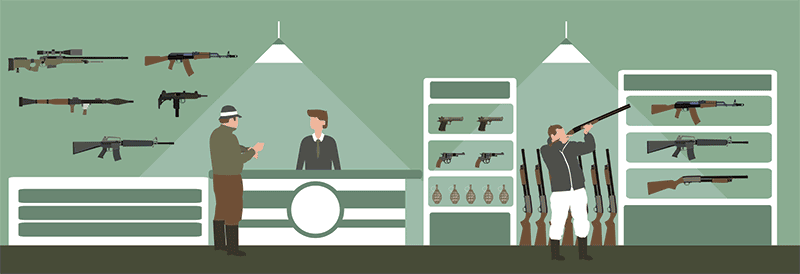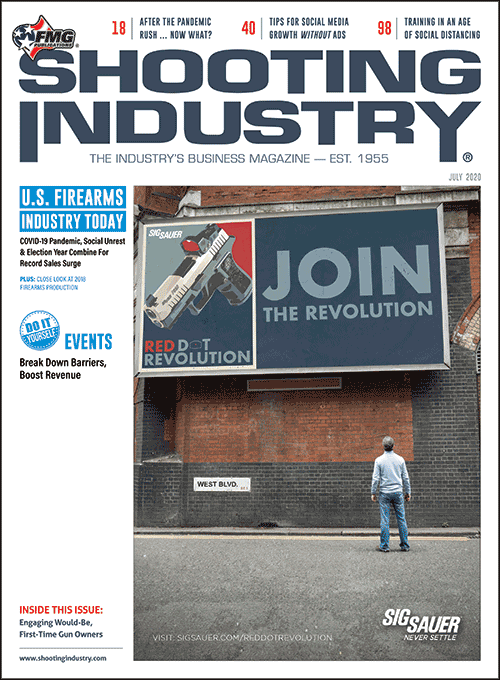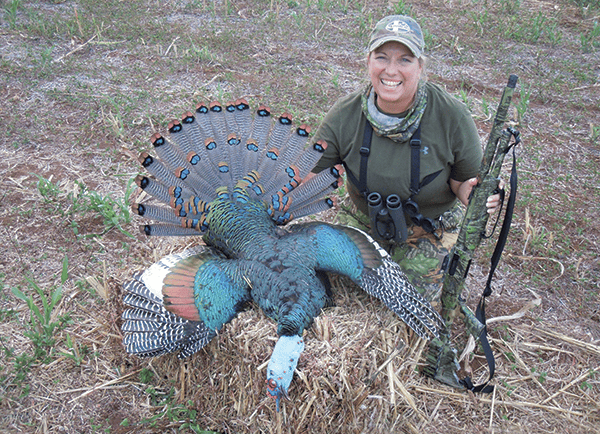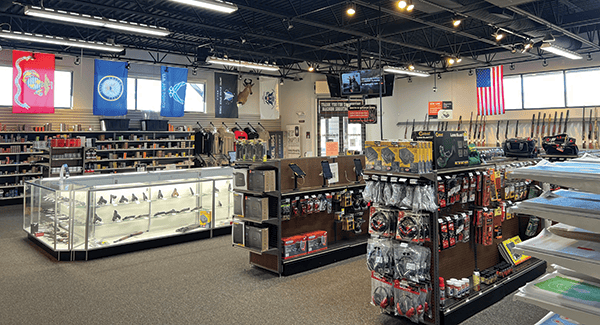Think about it for a moment: Would you rather have your team invest their time selling a $700 scope and all the mounting hardware to a customer trained to mount it themselves, or sell the same scope and mounting hardware with the employee tied up for an hour mounting it for the customer (often for free because they bought the items there) instead of selling another retail item?
This isn’t to say you would never mount a scope for a customer, but having a population of customers who can install the scope and hardware on their own usually can free your staff to go back into sales mode. As a nice kicker, everything a customer would need to mount, install and align a proper scope setup requires a nice collection of tools that can be a secondary wave of add-on purchases with great margins.
DIY Events: Break Down Barriers
And Boost Revenue
Imagine if you will (pre-COVID-19), you’re shopping at the local grocery store and you come up to the prime beef case. There’s a sale on filet mignon steaks, $12 a pound, and you think, “Wow! What a fantastic deal — those steaks usually run over $20 a pound!”
Yet you move on without purchasing the steak. Why?
Arguably many folks, if not most, who didn’t buy chose not to because they weren’t confident in their ability to properly cook a $12/pound steak — never mind one priced at $20 or more.
How could the supermarket overcome this barrier to purchase? Offer a cooking event on how to properly cook a great steak! Might customers be more open-minded to purchasing other expensive cuts of meat after they learn this skill? Will they become repeat buyers after they find out they can amaze their friends and family by cooking an outstanding steak at home? The chances are squarely in the store’s favor: they’re a resounding “YES!”
Remove Barriers To Entry
With the above scenario in mind, how can we improve traffic in our stores and create long-term repeat customers through the same process? A special “Do It Yourself” (DIY) event is a wonderful tactic that delivers multiple dividends for any retail store. Increased market visibility, engagement, customer traffic, predictable customer flow and improved sales volumes are just some of the benefits.
DIY-type events also add one critical facet other traditional “store events/sales” don’t: They help remove barriers to in-store and future purchasing behaviors. By removing barriers — be it skill- or information-based — it lubricates the process to convert on sales.
Speaking of lubricants, one effective barrier-breaking DIY topic in a firearms setting is a “How To Clean Your Firearm” event. Gun-care is an item-rich category of opportunity, affording high profit margins on every sale. Considering many states have gone to Constitutional Carry laws, people are purchasing handguns (as well as any other firearm) and don’t have a venue to learn proper cleaning skills concealed carry classes would usually deliver.
Concealed carry workshops represent another DIY concept with high-margin potential — capable of landing a lot of additional traffic. This can focus on proper fitting and positioning of a holster, the necessary accessories for their use and maintenance, as well as the option to run a “Draw From Holster” class to go along with it. When a customer starts to carry more often, he or she will need more holsters for the various seasons and situations, and may start carrying more and different handguns which will require even more holster purchases. By making the idea of concealed carry more approachable and comfortable, we break down the barriers to entry to a very lucrative sector of our inventory.
Overcoming Fear In Optics
Like the “filet mignon” example earlier, there are numerous barriers to entry to the world of optics. As Hunter Simmons, COO of Simmons’ Sporting Goods in Bastrop, La., said, “We try to make our customers better shooters, via optics, because it makes them want to buy better quality equipment.”
Optics is a very technical field and often overwhelming to the general consumer. What is the likelihood of closing the sale on a high-end optic when the customer hardly knows which end of the scope to look through? Here again we have a product category offering better-than-average margins and high-ticket prices. So instead of trying to educate customers in a one-on-one format, why not have an event where you can educate lots of customers at the same time?
You can enhance and expand your customer base in a cost efficient, scalable and, most importantly, profitable way.
Revisit Reloading
While optics help a shooter place bullets more precisely on target, good ammunition goes a long way toward determining success rates. Reloading, as a category, has among the highest barriers to entry for consumers. In this arena, we can steer a message and broaden awareness of how consumers can have a more direct — and fun — impact on the accuracy of their new or already owned firearms.
The bulk of reloading sales usually revolve around saving money and having the ability to make one’s own ammunition regardless of retail availability of loaded ammunition. However, in times where ammunition availability is good, and prices are low, reloading sales can suffer due to lack of interest. Coordinating a DIY event around reloading to customize ammunition to the customer’s specific firearms can be a great way to break down barriers of knowledge and create a more robust customer base.
Partner With Manufacturers
Just like customizing ammo for a rifle, a great way to customize an event for your store is to partner with a manufacturer and have a dedicated manufacturer event. These sorts of events lean on the expertise of the visiting factory representative to help build customer confidence because they’re getting honest and accurate information on how to work with the product on their own.
For example, SIG SAUER has put together a program where a store can have an on-site event featuring the SIG P320 as a DIY project gun. By offering the P320 chassis as an independent part, a store can then offer an “accessory buffet” to allow customers to build their own configuration. SIG is also partnering with third-party manufacturers to support this DIY movement with the P320 to promote products outside the SIG brand house.
Brainstorm where barriers to participation exist and use a DIY event to efficiently break them down.
Tom Taylor, SIG SAUER CMO and EVP said, “We’ve welcomed this DIY movement and are embracing third-party manufacturers who support the SIG product line to help customers build not just a gun, but their gun.”
In support of this initiative, SIG will be offering a “Gun Configurator” online tool so customers can experiment with the configuration they most desire before attending your in-store DIY event. Even if customers do buy online during your event, SIG is exploring ways to profit share these sales with the retailer based on the serial numbers sold by store. This opportunity broadens your audience beyond just in-store and allows you to convert on sales even after the event.
Start Brainstorming
To maximize the impact DIY events have on profits in your store, here are a few concluding thoughts that will help promote participation:
Hold at least one DIY event every month.
Host DIY events on the same day each month. (For example, you might have a DIY event on the third Sunday of each month.)
Keep the actual learning portion to 40 minutes or less.
Time subject matter to have its event before its peak season. (For example, have an optics workshop at least a month before hunting season starts.)
The basic concept here is to brainstorm where barriers to participation exist and use a DIY event to efficiently break them down to as many customers as possible, create awareness and build excitement.
By doing so, you can enhance and expand your customer base in a cost efficient, scalable and, most importantly, profitable way.
Is your store planning a DIY event this year? Let the SI team know and we’ll cover it. comments@shootingindustry.com






